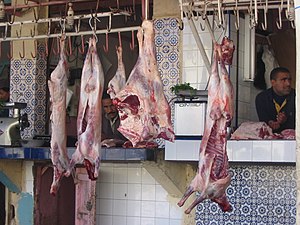I also agree with George. And I was told by a great student of Nakahodo sensei that he doesn’t _‘test hard’ either.
Anyone can hold his breath and tense every muscle in his body while taking a hard punch to the belly. Anyone can also get seriously injured by doing this.
True in so many ways. Not to mean that one should not condition to take hits [judiciously] _ Conditioning, even at the wrong spots, will in a way help psychologically in the chaos of a fight.
But careful. In a street fight the hits will go to your face and other body parts you cannot really condition. Of course the standard Uechi answer here is:
well you are supposed to ‘block’ those hits to body areas you cannot condition. Sure you do. 
More detrimental is the embedding of tensing and locking the breath as George explains so well.
This will make you lock up in many ways [freeze] _ if you will_ as you engage in defense. The additional lockup by the ‘dump’ will finish the job.
You will be a ‘slab of meat on the hook’ without realizing it _ for your enemy to cut open at will with his blade or ‘slicing punches’ _ the ones you dream of blocking now, like this cigar store Indian

A training session with Wes Tasker on this, will show you the error of your ways as you get busy picking up your severed ‘body parts’ from the floor _
Invite Wes for a training session and find out how tough you really are in a street fight.


